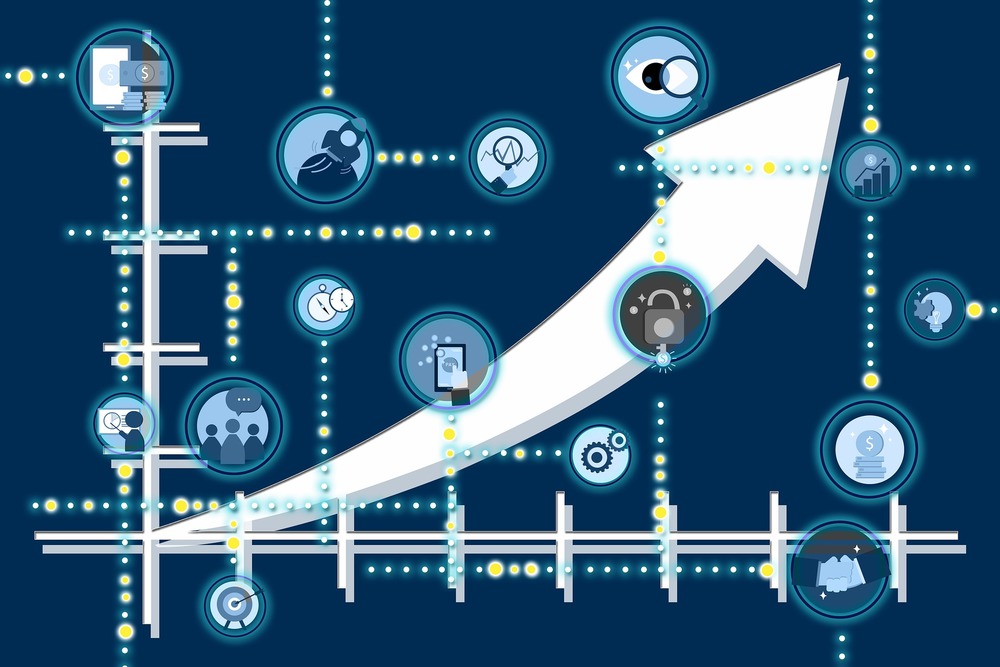This article is part of a blog series on construction 4.0, embracing digitalization, urbanization of emerging economies, and the changes it implies for the construction industry.
Technology is revolutionizing the digital transformation in the construction industry. Emerging technologies remodel:
- our way of working
- how we collaborate with each other’s
- our daily lives.
In the rapidly changing digital world, you have to meet the challenges of tomorrow, by proactively pushing changes through your organizations. For example, Artificial Intelligence (AI) and the Internet of Things (IoT) may help you get rid of ineffectiveness and poor productivity. The construction technology trends in 2023 are reshaping the industry.
Why is technology changing the industry?

There are few drivers impacting changes in the industry, but they are crucial for the development of a digital world in the Architect, Engineers, Construction, and Operation (AECO) sector, as they complement each other and influence the use of emerging technologies. The drivers are:
Client Expectations
Clients’ expectations are more and more demanding and innovative, in a swiftly moving market. Clients ask for customization of products or materials
- to use in houses, offices, infrastructure
- that are interchangeable, distinct, energy efficient, secured, and healthy.
Technology capabilities
Connected sensors, hardware, and software prices are decreasing, so they can be used in your projects easily and efficiently. There are a few new technologies used by professionals:
Start-up creation
More and more startups are created every day, delivering profitable solutions to the construction industry.
According to constructiondive in 2022 the construction industry worldwide, reported startup funding reached $5.38 billion, just under the $5.4 billion from 2021, despite a tough economy. 80% of investment was in North America and Europe, the United States was the most active.
Resistance to change
Despite an industry that is prone to resistance to change, the younger generation of professionals are familiar with technologies and are watching closely what the market has to offer, to streamline and automate processes.
Sustainable buildings
Digitalization decreases the environmental impact construction projects may have on the planet. The construction industry produces 40% of global energy-related CO2 emissions.
To accommodate a sustainable building growth from 2020 to 2060, of 2.6 trillion square feet of new floor area worldwide, governments, that already mandated zero emissions from new construction, will require energy-efficient buildings that use:
- no fossil fuels to operate
- renewable energy to power them.
Digital technology trends in construction in 2023.

According to the McKinsey report “imagining construction’s digital future”, the industry is ready to embrace the following technological trends:
New surveying method
Ground conditions are delaying projects’ completion. To mitigate this risk and increase accuracy and speed, surveyors may combine several advanced techniques:
- high-definition photography
- 3D laser scanning
- geolocation systems.
Building Information Modelling (BIM)
BIM is a digital representation of the physical and functional attributes of a project. It plans, scopes, schedules, and verifies that clients' requirements are met through its life cycle.
Combining BIM, immersive technologies, and wearable devices will help transform the construction industry's decision-making process.
Digital information
Automating and systemizing workflows in a construction project will improve collaboration and data collection across all stages of a project to facilitate the management of:
- people through scheduling
- materials through procurement and estimate systems
- quality control process.
Data management
The Internet of Things (IoT), artificial intelligence, sensors, and near-field-communication (NFC) devices will collect and manage data.
Using a platform on the cloud will allow project managers to monitor the productivity and reliability of:
- construction machinery
- equipment
- materials
- structure assembly.
Future-proof design and construction
The building materials worldwide industry market will reach $1.2 trillion by 2025. With new building materials, you can speed up your project’s delivery, improve quality and safety, and reduce costs.
Examples of materials are:
Evolution of construction technology

To streamline the construction processes using new technology like
Immersive technologies
Immersive technologies include Augmented Reality(AR) and Virtual Reality (VR)
AR superimposes a computer-generated image on the real world, to help visualize objects, and find out how they will behave in their real environment by:
- displaying information about equipment
- looking at components
- sending warnings when risks are emerging.
VR is a digital representation of the real world that simulates the environment.
It is complex and difficult to feel the space, even in 3D models. with AR and VR you are immersed in the digital world as if you were in the real one, and you can easily detect design and coordination errors you would not have been able to do in 3D or 2D drawings.
AR and VR can be used to discuss projects with clients as they visualize the final result, creating new opportunities for the industry.
The initial investment may be high but avoiding costly reworks will deliver a quick return.
Building Information Modelling (BIM)
Everybody is talking about BIM. That's because it is the best way to improve the accuracy and quality of the building process.
With BIM you can plan the project development in an open and highly collaborative environment. The BIM benefits are as follows:
- easy resource management
- quick access to project information from anywhere at any time
- improved collaboration and communication
- projects delivered on time and on budget
- accurate quality control
- scopes and schedules are agreed and signed collaboratively
- increased productivity.
Robotics
To make sure that the robot market remains competitive and will meet the future requirements of the construction industry, it is important to establish automated and robotized construction systems today. This includes an industrialized process in the following subsections of the market:
- mining
- construction material production
- prefabrication of construction
- components
- on-site construction
- facility management
- rehabilitation and recycling.
Companies like MIT and Construction Robotics are launching automated robots designed to solve two major issues:
- lack of productivity and profitability on construction sites
- labor shortage.
Sustainable prefabrication and modularization
Modular construction is a way of building more quickly, using modules, which are constructed in a factory and assembled on-site.
The definition given by the Modular Building Institute is as follows:
Permanent modular construction is a design and construction process performed in a manufacturing facility that produces building components, or modules, constructed to be transported to a permanent building site.
You can find these modular construction approaches in many sectors and construction types such as residential buildings, multi-family dwellings, schools and universities, prisons, railways, and high-rises.
Modular construction has very specific requirements and as such cannot be used for all architectural styles and building classifications, mainly where there is little repetition, but with the use of new technologies this is starting to change.
Modular construction:
- reduces cost, time-to-build, and waste
- improves the quality of the construction
- increases margins.
The biggest sustainability issue in the construction industry is the amount of waste generated. Modular construction and prefabrication allow you to recycle leftover materials and reduce waste, so it is an eco-friendly technique.
Self-healing concrete
Self-healing or self-repairing concrete is used on buildings, roads, and homes to freely fix its own cracks. By:
- sealing the cracks
- recovering the mechanical properties of its structural elements.
In 2023, and beyond, self-healing concrete technology could repair structural degradations and building cracks, to reduce the 4.1 billion metric tons of cement produced in 2022.
Concrete, made with cement, is an extensively produced and consumed material in the construction industry, so this technology will certainly be used widely worldwide.
Cloud and mobile technology
Nowadays, you can:
- find mobile devices leveraging cloud technology everywhere
- access the internet anytime from anywhere
- store large amounts of information
- share data immediately.
To meet your contractual obligations, you can leverage cloud solutions to:
- store large amounts of data
- ease access to data for your project managers
- keep data secure in remote locations
- collect data from connected devices and sensors
- expedite data analysis.
Cloud-based collaboration facilitates effective communication among project team members, a prerequisite to delivering successful projects. It:
- improves synchronization
- increases efficiency
- reduces errors and reworks
- minimizes project complexity.
According to a survey from the cloud construction industry 87% of the respondents are open to using the cloud to streamline and automate their processes.
Increasingly, construction companies integrate and manage their existing processes through a single, always-connected cloud-based platform.
The cloud can help project teams to work on the same sets of data across all stakeholders to:
- make decisions based on real-time and accurate data
- eliminate manual tasks by automating processes
- save time by scheduling tasks collaboratively
- reduce costs by eliminating clashes and costly reworks
- improve profitability and productivity by monitoring and verifying projects’ progress.
Drones
Drone technology is rapidly evolving, their usage in the construction industry has increased 239 percent year-over-year, according to BigRentz, an online equipment rental network.
Construction sites use drones to monitor project progress, complete safety inspections, and survey dangerous sites. Drones are known to improve onsite security and reduce labor costs by mitigating the risk of theft.
Analyzing data collected by drones with AI, visualization, and monitoring tools help to test and change, in real-time, new ideas to improve:
- building design
- project scheduling
- building operation systems.
The global construction drone market was USD 4.9 billion in 2021. It is expected to reach USD 15.8 billion by 2030.
In the construction industry, the use of drones can be inside a building to survey a specific room, or outside to scan hazardous sites. The possibilities are endless as drones can be used in various applications.
Drones are very trendy right now in the construction industry, thanks to their ability to collect data. They offer great benefits in:
- surveyance
- site monitoring
- site safety and security
- project management.
Drone technology can be used throughout the whole life cycle of a project, for example
- scoping the project by collecting rich media like photos, videos, and imagery that can be inserted into the BIM Execution Plan (BEP)
- tracking the construction progress in real-time
- optimizing the efficiency and usage of construction by collecting real-time data.
Surveying a site can be done in minutes, compared to traditional methods that could take weeks or even months. So, it saves time and money and improves accuracy and precision.
In conclusion

You can expect some great digital solutions in the construction industry, revolutionizing the way we work. The industry is going through interesting times right now with automation and digitization.
The construction consists of bespoke projects and one-off designs, and every building is unique so implementing digital solutions requires:
- identifying repetitive and hazardous tasks
- automating processes that are common in the industry
Digitalization will improve the quality and sustainability of your projects.
Driving Vision's technology appraisal looks at the best way to insert new technology in your workflows and how to move your organization to cloud computing, so you can open up new possibilities for your daily planning tasks and make sure your data never leaves the optimally secured data center.
A Driving Vision expert will conduct the interviews online and will issue a report and discuss our findings with you. Together we will decide the best way to implement the solutions at your pace and according to your budget.
Implementing BIM can be daunting, but Driving Vision is here to help you at the pace you are comfortable with. Get started by getting in touch now






